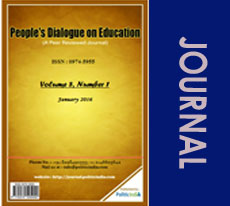Committee on Corporate Participation in Higher Education : Report of NR Narayana Murthy Committee
- Post By PoliticIndia.com on
- 2014-02-05 23:16:50
Ashutosh Kumar
Planning Commission constituted a Committee on 'Corporate Sector Participation in Higher Education', in January 2012. The Committee's mandate was to examine and provide recommendations on the potential and modalities for corporate sector participation in higher education in support of development of national education and innovation hubs and the Institutions of National importance (lNIs)/ centers of excellence, and models for industry-institution interaction to act as catalysts of innovation and sustainable and inclusive economic and regional development. The Committee was headed by Narayan Murthy and other members were Montek Singh Ahluwalia, the Deputy Chairman Planning Commission, Dr. Narendra Jadhav, Member (HRD) of the Planning Commission, Pawan Agarwal and Amit Khare.
The committee's approach was that government should transform itself from a provider of higher education to play key roles in enabling and establishing an appropriate regulatory framework to set quality standards for higher education. The Committee has approached its mandate from this perspective.
The recommendations proposed in this report are three-fold:
1. Create enabling conditions to make the higher education system robust and useful to attract investments.
2. Improve the quality of higher education by focusing on research and faculty development, with corporate sector participation.
3. Engage the corporate sector to invest in existing institutions, set up new institutions, and develop new knowledge clusters.
The committee argument is that, the government has been focused on expansion, equity through inclusion, and excellence in higher education, since last decade. Despite the efforts taken, there are serious challenges stated as following:-
1. Quality deficiency: India has the distinction of having the largest number of institutions for higher education in the world, but a majority of them are understaffed and ill-equipped.
- Faculty shortage- As per the FICCI-E&Y report, 45% of the positions for professors, 51% positions for readers, and 53% positions for lecturers were vacant in Indian universities in 2007- 08.According to statistics from the Ministry of Human Resources Development, the student to teacher ratio in an average higher education institution is 26:1, compared to the norm of 15:1. It is also quite adverse in comparison to national and international benchmarks. This ratio is 11:1 for the Indian Institutes of Management. According to The Princeton Review, it is 7:1 for Harvard University and 5:1 for Stanford University.
- Deficient physical infrastructure-A study of infrastructure quality of 1471 colleges and 111 universities by UGC revealed that 73% of colleges and 68% of universities fall under medium or low quality.
- Poor academic standards - The system is plagued with outdated curricula and ill-equipped libraries. As per the FICCI-E&Y report, the number of books per student in the library of an average higher education institution in India is just 9 compared with 53 at IIT Bombay and 810 at Harvard University.
- Unaccredited institutions - As of March 2011, only 161 universities and 4,371 colleges had been accredited by the National Assessment and Accreditation Council (NAAC).
- Employability - Currently, around 500,000 engineering students graduate from the Indian engineering colleges. This is estimated to cross one million in three to four years from now. While the numbers are impressive, the quality of these graduates is not. According to NASSCOM, only 25% of the pool of graduates available for IT/ITES industry is readily employable. Similar challenges are faced across other disciplines and industries, including public institutions.
(2). Quantity mismatch: The need for higher education is ever increasing. Student enrolment has shown a steady increase from 8.4 million in 2000-01 to 14.6 million as of 2009-10. With increasing focus on primary and secondary education and a projected fall in the drop-out rates, the demand for higher education is estimated to increase at a compounded rate of 11-12% till 2022 and will require an additional capacity of about 26 million seats over the next decade. This would result in increased demand for institutions to educate and make employable the vast number of students who would join the system in the next 15 years. While scaling up to meet increasing future demand, the Indian institutions of higher education have to be made attractive for students by bringing them at par with global standards to generate a higher number of competent and employable graduates.
(3). Funding gaps: The government spends 1.1% of GDP on higher education. This is only 19% of the total spend on education. The current outlay from the government will not be sufficient to meet the requirements. As pointed out by the National Knowledge Commission, there is need for greater public investment, diversifying sources of financing and stimulating private investments as a means of extending educational opportunities in higher education.
The committee suggested that involvement of corporate sector in field of higher education is the only way to solve the above stated problem of higher education.
According to recommendation, globally, the corporate sector has played an important role in higher education institutions. In India too, the corporate sector can play a significant role in addressing these issues by bringing in financial resources, providing research support and collaboration opportunities, helping in faculty development, supporting students through scholarships and offering opportunities to complement learning through internships. The engagement models for the corporate sector can be several - from being a passive provider of capital to the most active in terms of directly owning and running an institution. As an end stakeholder, the corporate sector also could play a key role in activities beyond institutional aspects.
The committee suggested following ways to execute the recommendations in order the solve the problem of higher education;-
A. Recommendations towards creating enabling conditions to make the higher education system robust and useful to attract investments.
- Autonomy - in financial, regulatory, academic and administrative aspects
- Resources - ensuring availability of land, infrastructure and connectivity
- Fiscal incentives- to encourage investments and attracting funding
- Enabling environment- (such as visas) for free movement of faculty and students to promote collaboration with world-class institutions abroad
- Freedom to accredit- with global accreditation agencies to put Indian institutions on par with the best
- Access to funds- through scholarships to enable students to pursue their chosen fields of study .
B. Recommendations towards corporate participation in improving quality by enhancing research focus and faculty development.
7.Enhancing research focus - through dedicated funding for research, sponsored doctoral programs, and part-time Masters and PhD programs .
8. Faculty development - by increasing the talent pool of faculty from corporate (working and retired), faculty development programs, and sponsorships of visits by expert faculty.
C. Specific recommendations towards creation of new infrastructure through corporate investments in higher education.
9. Setting up of new facilities by the corporate sector in existing universities and higher education institutions either as Centers of Excellence or in the form of technology parks.
10. Setting up of new universities and higher education institutions.
11. Developing new knowledge clusters / hubs.
Critical Evaluation of the Narayan Murthy Recommendation:-
The recommendation directly favors the commercialization or privatization of higher education system. It also prepares the background for entry of foreign educational institution. While this committee concern about the poor quality of higher education, its recommendations appear to treat higher educational institutions like factories. In other words it treats higher education as a commodity and institutions as profit making industry. It simply supports the Ambani-Birla group recommendation which first time openly supported the involvement of corporate sectors in higher education in India. Their impacts on higher education system are following:-
1. Access and Equity: - as we know in India financial constraints is one of the biggest hurdles in access to higher education in India. The high fees of private universities may worse the problem of access to higher education. On the other hand, private providers will not address the social impediments and reservation policies for the disadvantaged groups, it will work against the objectives of inclusive higher education. However the committee accepted the provision of scholarships and educational loans, it can't address the issue of equity in access to higher education.
2. Excellence:- the Narayan Murthy Committee(NMC) laments the poor quality of higher education and prescribes self regulation, choice of agency of accreditation and autonomy for the new institutions to be world class. If an institution chooses an accreditation agency, it suggests self interest elements creeping into the process which can jeopardize the whole purpose. NMC proposes to create a market of higher education with private universities and PPP universities with almost no regulation and full autonomy. Such type of higher education system would not be confined to pursuit of excellence but would work for cost recovery and profiteering for existence in the market.
In summary, NMC recommendations might serve the purpose of achieving expansion in absolute terms but it does not give serious consideration to the objective of equity. While NMC seems to be dreaming of a utopia for achieving excellence, its recommendations appear to treat higher educational institutions like factories. Thus there seems to be a mismatch between its recommendations and the objectives of the Twelfth five year programme.






